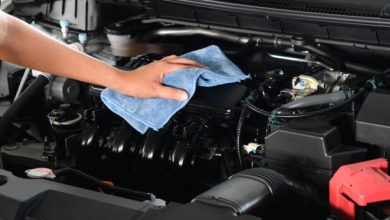Automotive
Well, What’s All This Discussion on Rising Farm Tyres Demands In
Well, What’s All This Discussion on Rising Farm Tyres Demands In

Whether they are aware of it or not, It is advisable for farmers by law to guarantee that the Continental Tyres Chelmsford on the farming machinery they own and operate are suitable for their use. Growers and operators often lack adequate knowledge of the legislation governing the operation of agricultural equipment on the road and drastically underestimate the potentially serious repercussions of breaking the law.
UK Tyre Laws on Agricultural Vehicles
Operating at speeds more than twenty miles per hour has enormous ramifications in terms of the rising demands on tyres in terms of reliability, endurance, and safety. You also enter a different universe in terms of the applicable regulations. If you exceed that limit, the police may “strike the book at you. Especially in the event of an accident.
Even while the roadworthiness of heavy vehicles and equipment has vastly been in progress in recent years. There are still tractors and machinery in use that cannot be at speeds beyond 20 miles per hour. The second crucial consideration with tyres is that surpassing the 3m width restriction for cars on public roads may be illegal.
Difference Between Radial and Cross-Ply Tyres
Let’s Examine the Differences:
Radial-Type Tyres
Together with its robustness, the greater flexibility of radial tyres enables radial tractor tyres to absorb potholes and severe shocks more efficiently than their cross-ply counterparts.
This combination of adaptability provides you, the driver, with a far more pleasant ride and a better ride for your vehicle. In addition, radials improve vehicle stability and reduce soil compaction by distributing the car’s weight over the surface.
CROSS-PLY
Although cross-ply lacks the benefit of radials, they are less expensive and sometimes the best alternative. Cross-ply tyres feature a sturdier sidewall than radial tyres, which is advantageous for preventing or minimising sidewall punctures. In certain sectors, such as forests, this functionality might be essential! They provide less stability than radials, resulting in a significantly harsher ride.
Agricultural Tyre Development
This shift in demand for agricultural equipment has led to alterations in the social system and efficiency of farms.
In western nations, the change has occurred over many decades on family farms with a large amount of light operational equipment. They have now become family businesses with few employees and large, powerful machinery. Changes at the level of the machines have resulted in a significant boost in production.
The tyre follows the development of machinery with new needs related to the ever-increasing weight of tractors and the goal to prevent soil compaction. That would be destructive to the greatest extent conceivable.
The Evolution of Agricultural Tyres in Three Stages
The three stages of the development of Agri. tyres:
-
Authentic diagonal construction tyres are still available on the market and have a legitimate place in particular activities or occupations that demand sidewalls that are as sturdy as the tread. They are good for work on hard surfaces, such as animal breeding operations in a farm patio or woodland or construction site labour.
-
The introduction of radial structure tyres is a significant development, but only for specific agricultural operations, particularly one of the most crucial: land cultivation, crop cultivation, tilling and reaping. This kind of tyre is more suitable for tilling since the pressure distributes uniformly under the tread pattern, hence decreasing the local compaction created by diagonal construction tyres.
-
Low-pressure IF then VF innovation tyres are a progression of the radial structure tyre, allowing land to be without soil compaction by increasing traction and resolving the issue of sliding.
The Production of Farm Tyres
Rubber is the tyre’s base material, and here is where the distinctions between high-quality and low-quality tyres begin. Natural rubber (latex) obtains from the sap of the Hevea tree and possesses invaluable properties: it is durable, elastic, impenetrable, and responds well to vulcanization. The amount of natural rubber in use determines the tyre’s properties, such as resistance and suppleness.
Studies and development allow for the improvement of compounds and elements. Resulting in tyres that are significantly more durable and long-lasting. The research facility plays a key function. Since it is at the centre of technical advancements regarding tyres.
TYRE MARKINGS
Geographic region and manufacturer influence tyre marks for agricultural vehicles. Tractor Tyres Chelmsford have seen technological advancements throughout the years, which may be on their sidewalls.
ETRTO (European Tyre and Rim Technical Organisation) regulations have been in for many years to ease and standardise the size of agricultural tyres.



